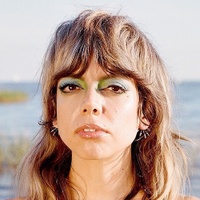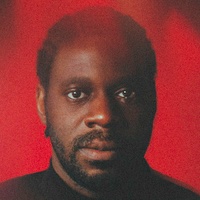On not being afraid to create your own opportunities
Prelude
Osa Atoe is a studio potter and founder of Kaabo Clay Collective, a mutual aid network for Black ceramicists. She lives in Sarasota, FL.
Conversation
On not being afraid to create your own opportunities
Potter Osa Atoe discusses the value of DIY punk approaches, connecting with other artists, and carving out time to rest.
As told to Eva Recinos, 2446 words.
Tags: Craft, Art, Business, Time management, Process, Politics, Mentorship.
You’ve talked about how when you first got interested in ceramics, you completed a one year Post-Bac program at Louisiana State University. But you were also seeking out mentors and creating your own independent research. Could you talk a little bit about how you began that journey?
I don’t really frame it as research. I frame it as being curious and wanting to learn more about what it is that I do. I mean, this is my profession. So, I don’t know, it seemed like second nature to look deeper. I don’t see it as anything more sophisticated or complicated than wanting to look a little bit deeper into this thing that I’m in love with, and that is the way that I make a living.
When I found that I was attracted to working with red clay, I started Google searching the word “terra cotta” because I wanted to know more about the material and the associations of it. And then that led me to a lot of ancient pottery from the Bronze Age and West African pottery. My family’s from Nigeria, and a lot of the traditional ceramics are made with red clay. It was a Pandora’s box. One thing led to the next.
I know you’ve mentioned bridging history and a modern design sensibility in your work.
Yeah, definitely. I’m taking a lot of cues from historical ceramics, but then modifying what I’m finding to suit our day-to-day needs. I’m using these traditional forms, but changing them in such a way that suits our modern lifestyle.
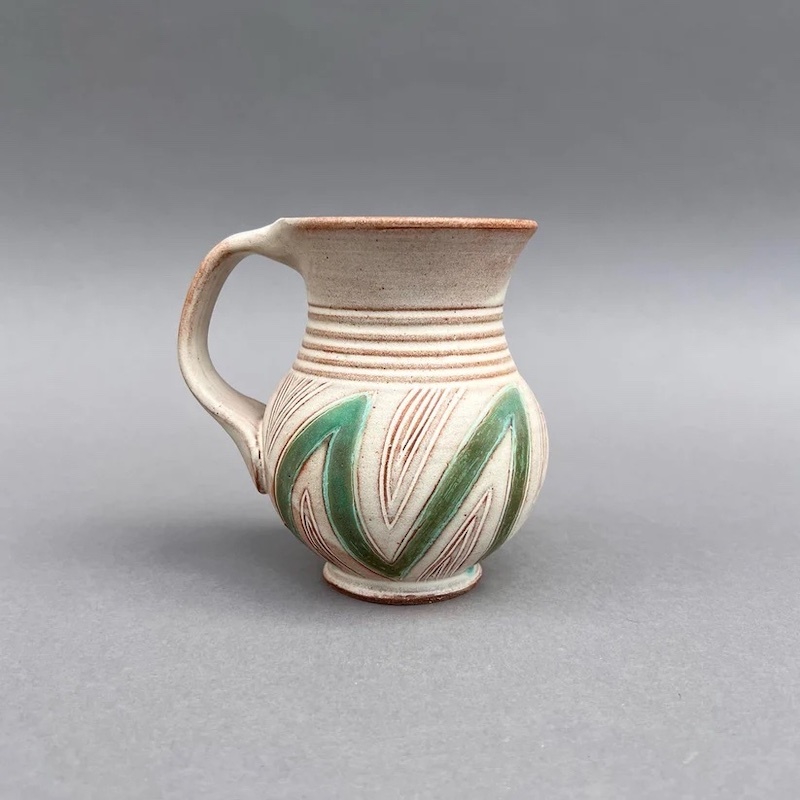
I’d love to talk about the connections between the work that you did before you went into pottery full time. Do you see connections between the work that you did within the music world, your writing, and your activism—and the pottery that you’re making today?
Yes and no. I’m the same person, so I still care about the social impact that arts can have and always connecting my craft to social issues. So that’s something that’s never stopped for me. I still do that.
When you’re in a punk band, you set up your own shows. I set up a ton of shows for my band and other people’s bands. And that takes cold calling a space that may or may not be a traditional music venue and thinking outside the box and putting together that “who, what, where and why” to create an event. When I found ceramics, I had the same mentality of creating my own events. I used to put together pop-up events at plant nurseries and little boutiques in New Orleans—and places where ceramics may or may not have been sold, but I could relate what I was making to what they were selling, and we made a good collaboration. So just that mindset of not waiting for opportunities to come to me, but creating my own opportunities, definitely came from punk.
The biggest difference is the appeal. So there’s a universality with ceramics that punk doesn’t have. Punk is about being—I don’t want to use the word “exclusive”—but it’s so subcultural. It’s not meant to appeal to the masses. In fact, it’s in reaction to the mainstream. And there’s something about ceramics that is very universal.
As a person who takes a lot of these DIY approaches—finding spaces, finding collaborations—has it gotten easier over the years, or do you always change your approach to those collaborative practices?
It’s become a second nature way to operate in the world. But also, pottery has been way more of a solitary practice than being in punk. Punk is all about the scene, and bands are a group of people, not just one person. Right now, as I’m talking to you, I’m alone in my studio. And when I was creating those events, it was just for me. It wasn’t for a bunch of different bands, it wasn’t for me and my band mates—it was just for me. And then for people to come to shop, or to look at my work.
So I would say that punk was probably more collaborative, and that was a good and bad thing. Collaborating is a wonderful opportunity to combine energies with people and there’s wonderful chemistry that can happen. You can create art that is greater than the sum of the parts.
But the downside is that a lot of those collaborations were temporary. It was hard to get people, including myself, to commit on a long enough timeline. As I got older, I was craving consistency. And that’s why I think I turned to ceramics as an expressive medium because I could work on it by myself.
And so, here I am almost 10 years in, and I’ve been able to work consistently for a decade. In the beginning, when I started my business, I was sometimes working seven days a week and making pots seven days a week. And that was never a reality with punk bands where you have to schedule practice with two, three, four other people and maybe you can practice once a week. As someone who had an inkling that, “Hey, maybe I could be better at something if I gave it my all,” I burned out on collaborating and wanted to go solo. Because I knew that I could be more consistent by myself than with a group.
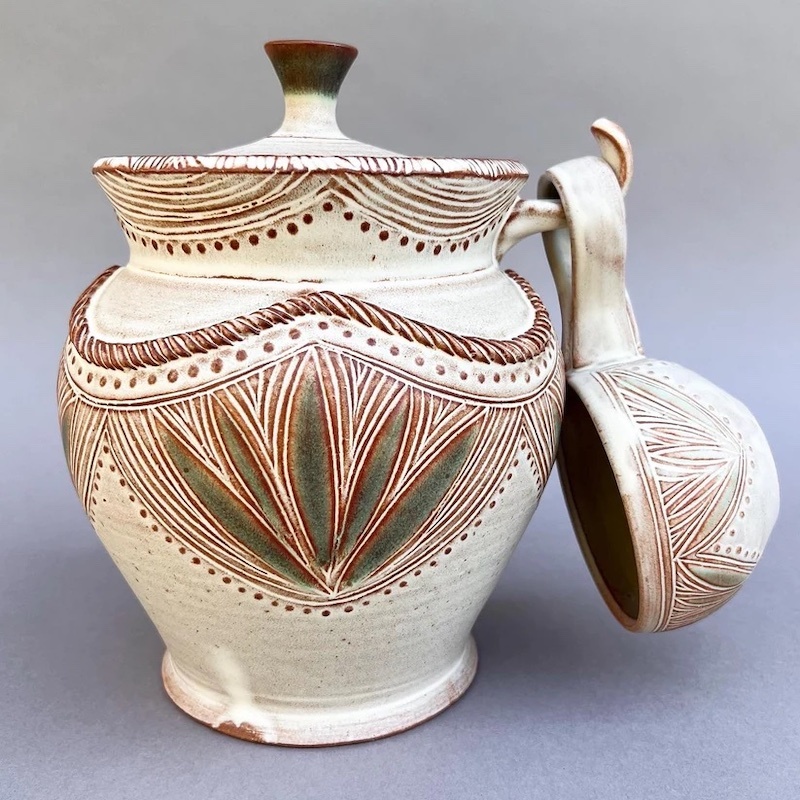
Do you have any advice for artists who are starting out, who really want to open up a little bit more in terms of collaborating but that are nervous or maybe feeling vulnerable about sharing their work?
I mean, there’s really nothing to say beyond: Just do it. I mean, most of our fears are an illusion anyway. What’s the worst thing that could happen? If you reach out to someone and they, say, don’t respond, you could just move on to the next person—and just assume that wasn’t the right person for you to collaborate with or connect to. But chances are, people are going to be pretty open. I mean, there’s just no other advice than just get out of your own way and stop overthinking and just do it. There’s so much to gain.
Every time I’ve spoken to another ceramicist, every time I’ve gone out of my way to meet someone and have a conversation, I’ve learned something.
For instance, I just moved to Florida two years ago. There’s a great network of ceramicists here. I started following an Orlando ceramicist named Richard Munster. He lives in Orlando, which is two hours away. When me and my husband were in Orlando, we decided to stop by his house and say hi. He had proven to be really friendly on the internet and was really open to meeting. He has a wood fire kiln in his backyard and showed us all this stuff. And I was talking to him about the wild clay that I forage every now and then, and how I wanted to work with it more. He’s a high school teacher and has a lot more formal education than I do. So he just mentioned a certain ingredient that I could add to my clay to make it more workable.
I went home and I figured it would be a little bit more complicated than that, and maybe I would need more than just that one ingredient. But that turned out to be the whole move. I could just add that ingredient to my wild clay and it made it so much more workable.
I wasn’t meeting him to pick his brain about anything. It’s just like, these natural conversations happen. I learned something that happened to be beneficial to my studio practice. And I have a hundred stories like that. There’s everything to gain from connecting with other people. And hopefully, you’re doing the same thing, as an artist. You’re willing to share your experiences and your knowledge because it will come back to you.
I’d love to talk about some of the recent videos and photos that you shared of your pottery, shot by Shoog McDaniel. What a great idea for a collaboration — to have someone else’s lens and present these ceramic pieces underwater, creating a sense of movement. Could you tell me a little bit about that collaboration?
Shoog and I are part of the same general scene of friends. We hadn’t hung out very much, but we’d met each other before. We have a lot of the same friends. They usually shoot bodies. They shoot a lot of fat bodies in water and queer and trans bodies, and they use water as this liberatory space where you can feel free of the weight of your body and you can experience lightness. I wasn’t quite sure if they were going to be interested in shooting pottery, to be honest. They don’t really do that. So I went with some pots, but I was like, “Maybe we’ll do this, maybe we won’t.”
I just went to hang out. It wasn’t like a business networking thing. It was like, we come from the same friend group, we come from the same ideological background of punk and DIY and the queer scene. I just went, being open to taking pictures or not. So what I was saying earlier about the chemistry of collaboration? That’s what you’re seeing.
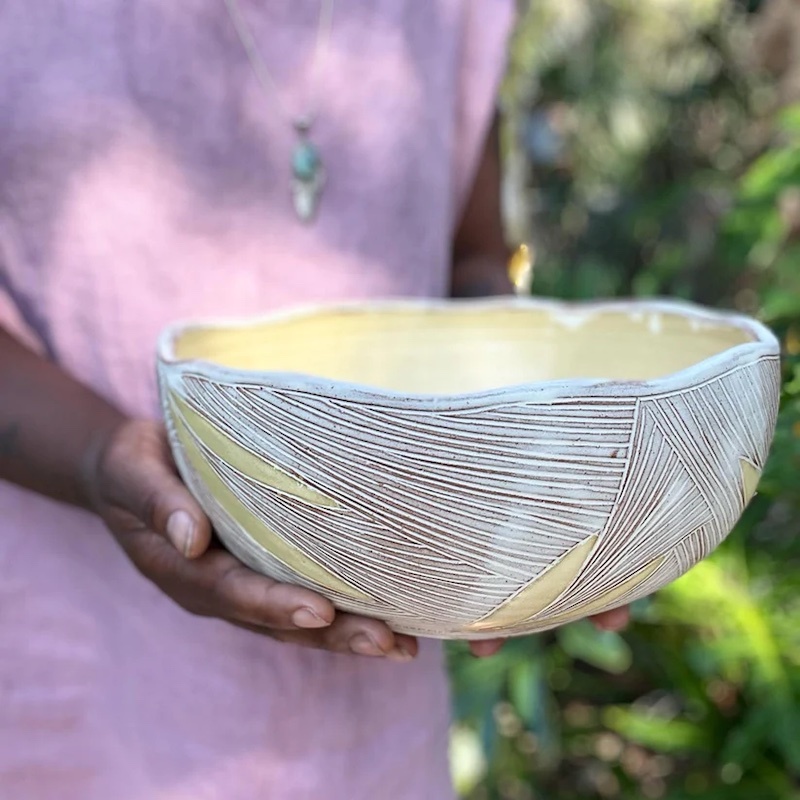
Yeah, definitely. And I’m thinking, too, about Kaabo Clay Collective. When did you know, “Okay, I’m at a point in my own creative career and journey, where I have the mental space and the capacity to also work on this collective.” Was there a specific moment?
It came out of the response of the ceramics community to George Floyd’s death. It just felt like a thing of necessity. Also, I invented Kaabo for myself, and I think that’s how you have to go about things. You can try to frame it like community work or activism. But I’m a Black ceramicist in a town where there are no other Black ceramicists that I know of—and so, I needed that connection. And really, it started as just a chat group. So it didn’t take a lot of effort or money. It was free. And it was literally just saying, “Hey, I’m a Black ceramicist, I want to be connected with more Black ceramicists and I want to bring everybody together.”
So there wasn’t the idea of, “I’m going to create an organization from the ground up.” It was more just about taking the first step, doing what I felt like I needed to do for myself and if I need it, other people obviously need it. It didn’t feel like work, it just felt like something that was going to benefit us all.
Looking at it now, do you think, “Oh, this has grown in a way that I didn’t expect it to?” or do you feel like it’s progressing how it’s meant to?
I think that as soon as you put an idea out there, it’s bound to get more complicated. I mean, it just seems like that’s how things progress. I think it’s because I’m older. I mean, I’m 44, so this is not the first thing I’ve ever started. So I knew that what you do is you plant the seed—and then you just watch it grow. Honestly, I think it could grow faster if I wanted it to. I just don’t know if I want it to yet and no one else has stepped up to really push it. So it’s going at a pretty relaxed pace, which is fine with me, because we’re all busy.
I felt pretty confident that it would develop on its own. And I also figured that if it didn’t develop, then that just meant that it wasn’t useful and that people didn’t need it. And then what would be the point of it? I don’t really run it. I mean, I do to some degree, but it requires participation. It’s a collective. I’m not the head of it, really. If people aren’t participating, I’m going to take that as a sign—mostly it’s a sign that people are just busy. But if it dissolved, it would be because it’s an obsolete idea…But I really do see that a lot of people think it’s important and do pitch in to volunteer and make things happen. And that’s been really amazing to see.
And, how do you unwind, slow down, considering how busy you are from day to day?
Oh, I relax a whole lot. I’m actually not that busy. I mean, I work really hard, but I have a really great balance. And I mean, I run my own business. So if I’m running myself ragged, or if I can’t find time to relax, it’s my own fault. And I think that running a business can be a site of liberation.
It’s ironic because it’s business, which is capitalism. But I think as a business owner, you can redefine and control the circumstances of your work life. So that’s what I do. I’m really adamant about taking weekends off. In the beginning, it was harder to do that—I had to hustle a lot harder. I think it’s just overcoming that inertia. You’re just trying to get started. You’re trying to get the ball rolling. And I think that every business owner feels that way in the beginning. It’s just hectic. But I think after a while I was like, “Well, I can organize my life, things are rolling. There’s interest in my work. I need to adjust my pricing.”
Because what I see a lot of people doing is undercharging, and then you’re just always treading water. So you’re not charging enough for your work and it’s making you just too busy. And you’re constantly busy and constantly struggling…Yes, we’re all oppressed by the system, but there’s also decisions we can make. I just feel like as a business owner, I prioritize resting and I prioritize leisure and I take time off and I take breaks. And I don’t know—that’s part of my business ethic, I guess.
Some non-pottery links:
Shotgun Seamstress (anthology of zines by Osa Atoe)
Firebrand (music made by Osa Atoe)
Tropical Depression (music mixed by Osa Atoe)
“The Forgotten Women of Punk” (article about Osa Atoe)
- Name
- Osa Atoe
- Vocation
- studio potter, founder of Kaabo Clay Collective
Some Things
Pagination
